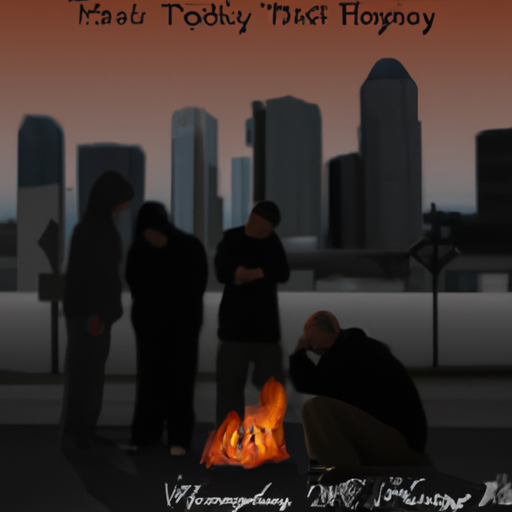Deciphering the Impact of the Canadian Opioid Crisis Highlighted by Toronto’s Pole Fire Incident
Canada’s opioid crisis has manifested in a multitude of ways, impacting the lives of countless Canadians in systemic and deeply individual ways. Recent events, including a pole fire in Toronto’s downtown core, offer additional contexts for visualizing the complex landscape of this crisis. They shed light on the diverse societal effects of the opioid crisis and the multifaceted efforts towards mitigating their impact.
Pole Fire Incident: An Unconventional Window into the Opioid Crisis
The pole fire, which left thousands without power, is not an apparent reference point while discussing an issue like the opioid crisis. Yet, it highlights critical realities of the lives touched by this crisis, specifically within transient and homeless populations.
According to some experts, it is believed that the fire was caused by a group of people living rough, a gesture of desperate individuals trying to stay warm amidst the city’s harsh winter. If this narrative is accurate, the incident becomes symbolic of issues far deeper and more complex than a mere power shortage – it becomes an emblem of a society under the strain of the opioid epidemic.
The Ripple Effects of the Opioid Crisis
The societal effects of the opioid crisis are vast and multifaceted. They range from burdening the healthcare system to feeding into the vicious cycle of poverty and homelessness. In light of the pole fire incident, some notable effects that merit careful considerations include:
- Homelessness: The opioid crisis has been linked to increased homelessness. This incident sheds light on the desperate measures taken by those pushed to the brink by the crisis.
- Public safety and crime: The fire and subsequent blackout in the city’s downtown area not only endangered those directly involved but also posed a threat to public safety. It exposes how the opioid crisis can indirectly impact crime rates and overall public security.
- Mental health: The incident underscores the significant mental health challenges faced by individuals embroiled in the opioid crisis, further necessitating accessible and comprehensive support services.
Combatting the Crisis: Identified Measures and Their Impact
Addressing the opioid crisis requires concerted effort from multiple fronts – from preventive strategies to responsive measures. In relation to the outlined effects, multipartite attempts have been launched:
- Opioid Class Action: A nationwide class-action lawsuit has been filed against pharmaceutical companies for their alleged role in fuelling the opioid crisis. Perceptions of justice through litigation can potentially benefit victims psychologically.
- Naloxone distribution: Naloxone, an opioid reversal medication, has been made increasingly available across Toronto. While primarily a lifesaving measure, it also encapsulates harm reduction as an approach towards addressing the opioid crisis.
- Supportive housing initiatives: Different levels of governments have taken steps to increase access to supportive housing programs for individuals struggling with opioid addiction, critically linking the crisis to homelessness and housing matters.
Concluding Thoughts
The Canadian opioid crisis is a multifaceted issue that permeates various sectors of our society, impacting nearly every Canadian in some way. The pole fire incident provides a unique lens to view the crisis, revealing the intricacies of its effects, from homelessness to public safety concerns. Amidst these challenges, nationwide attempts like the opioid class action and readily available naloxone distribution underscore a dynamically responsive approach. Yet, the incident articulates the stark reality that our efforts need to be perpetually evolving, adapting to the diverse manifestations of the crisis.
As civic and community leaders, it is paramount to maintain an unwavering commitment in understanding the far-reaching effects of this crisis. With this comprehension, we can spearhead initiatives and policies fostering resiliency and regeneration in the wake of this complex crisis.
